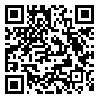Volume 1, Issue 4 (10-1997)
IBJ 1997, 1(4): 27-34 |
Back to browse issues page
Download citation:
BibTeX | RIS | EndNote | Medlars | ProCite | Reference Manager | RefWorks
Send citation to:



BibTeX | RIS | EndNote | Medlars | ProCite | Reference Manager | RefWorks
Send citation to:
Mahboudi F, Feeney A J, Arnold L, Haughton G, Ravech E. Detection of Pre-Malifnant B-1 Cells in NZB Mice with a Re-stricted CDR3/DFL16 Region. IBJ 1997; 1 (4) :27-34
URL: http://ibj.pasteur.ac.ir/article-1-876-en.html
URL: http://ibj.pasteur.ac.ir/article-1-876-en.html
Abstract:
The relationship between the immunoglobulin (Ig) nucleotide sequence and the ability of a B cell to develop into a malignant cell was studied in a subset of B cells, B-1 cells. B-1 cells become malignant in chronic lymphocytic leukemia (CLL) and are responsible for the production of "natural autoantibodies". The autoimmune NZB mouse has been known as a human malignancy and CLL model, because of the age-dependent onset of clonally expanded hyperdiploid B-1 cells in these mice. The Ig heavy chain variable region in hyperdiploid B-1 clones from several NZB mice showed common characteristics in the CDR3 shared with fetal B cells: lack of N base insertions and presence of homology sequences at the VH-D-JH junctions that can be encoded by either of the two joined gene segments. Using a degenerative oligoprimer was shown no significant differences in expression of the restricted CDR3/DFL16 region in newborns or in the liver of either strain of mice as young adults. However, the expression of the restricted CDR3/DFL16 in the spleens of young adult NZB was remarkably elevated and showed significant differences from the expression in newborn NZB as well as from young adult and newborn BALB/c mice. It appears that malignant hyperdiploid B-1 cells are derived from fetal B cells. This technique can be used as a molecular marker to demonstrate a relative increase in the expression of this CDR3 in animals pre-destined to develop B-malignancies.
Type of Study: Full Length/Original Article |
| Rights and permissions | |
 |
This work is licensed under a Creative Commons Attribution-NonCommercial 4.0 International License. |







.png)
